Did you know that workers were hospitalized while making mobile phones? Additionally, did you realize that you are at increased risk of dying from surgery fire created by increased technology usage in hospitals? Learn more about at least 25 ways that technologies are affecting your health today through the categorized list below.
Computers and Peripherals Risks
 Laptops and Sperm Count: This article reports on a study conducted by Loyola University that shows the heat from a laptop can reduce sperm count in men.
Laptops and Sperm Count: This article reports on a study conducted by Loyola University that shows the heat from a laptop can reduce sperm count in men. Smoking could Harm You…AND Your Apple Computer: Smoking near your Apple computer can be considered a biohazard for your computer in some cases…although this information may not be included in your Apple contract. Treat yourself and your computer nice…get rid of the smoke in the office, at least.
Smoking could Harm You…AND Your Apple Computer: Smoking near your Apple computer can be considered a biohazard for your computer in some cases…although this information may not be included in your Apple contract. Treat yourself and your computer nice…get rid of the smoke in the office, at least.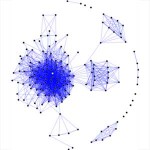 Social Networking Dangers: Two British scientists have suggested that social networking can add to your workload, increasing stress levels.
Social Networking Dangers: Two British scientists have suggested that social networking can add to your workload, increasing stress levels. Printers are Hazardous to Your Health: According to this article, an investigation of dozens of laser printers revealed that almost 30 percent emitted potentially dangerous levels of tiny toner-like material into the air and, possibly, into your lungs.
Printers are Hazardous to Your Health: According to this article, an investigation of dozens of laser printers revealed that almost 30 percent emitted potentially dangerous levels of tiny toner-like material into the air and, possibly, into your lungs. Prison Computer Recycling Proved Toxic: Federal prisoners and staff overseers were exposed for years to excessive levels of toxic heavy metals during computer recycling operations, according to a report from the National Institute of Occupational Safety and Health. But, it was difficult to determine the health hazard, as the prisons lacked biological monitoring and industrial hygiene data.
Prison Computer Recycling Proved Toxic: Federal prisoners and staff overseers were exposed for years to excessive levels of toxic heavy metals during computer recycling operations, according to a report from the National Institute of Occupational Safety and Health. But, it was difficult to determine the health hazard, as the prisons lacked biological monitoring and industrial hygiene data.
HIT (Health Information Technology) and Your Health
 Health Care Privacy Issues: The Federal Trade Commission (FTC) is exploring privacy concerns regarding health care, including medical research, drug marketing and insurance data.
Health Care Privacy Issues: The Federal Trade Commission (FTC) is exploring privacy concerns regarding health care, including medical research, drug marketing and insurance data.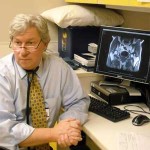 Does HIT Actually Help Your Health? According to a 2005 study from Harvard Medical School, many doctors were not fully using their health technology. Lead researcher Jeffrey Linder found no link between using e-records and improved quality of care.
Does HIT Actually Help Your Health? According to a 2005 study from Harvard Medical School, many doctors were not fully using their health technology. Lead researcher Jeffrey Linder found no link between using e-records and improved quality of care. Unregulated Issues Could Affect Your Health: This link leads to an article that questions the computer programming error that caused West Penn Allegheny Health System’s laboratory to send physicians incorrect interpretations of prostate cancer tests for 288 patients over 15 months. Since health IT is unregulated, all that’s required in this situation is an “please excuse us, we’ll do better the next time” from the involved parties.
Unregulated Issues Could Affect Your Health: This link leads to an article that questions the computer programming error that caused West Penn Allegheny Health System’s laboratory to send physicians incorrect interpretations of prostate cancer tests for 288 patients over 15 months. Since health IT is unregulated, all that’s required in this situation is an “please excuse us, we’ll do better the next time” from the involved parties.
Wireless Issues and Mobile Phone Health
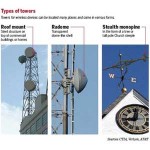 Cell Tower Debates: This link leads to one example of issues involved with the increasing growth of cell-phone towers to meet the demands of cell-phone use. The article concludes that this debate still is up in the air, despite reassurances from the Federal Communications Commission (FCC).
Cell Tower Debates: This link leads to one example of issues involved with the increasing growth of cell-phone towers to meet the demands of cell-phone use. The article concludes that this debate still is up in the air, despite reassurances from the Federal Communications Commission (FCC). Consider Your Sources: In this expose, Kathleen E. McLaughlin reported in March that n-hexane used in the production of touch screens for Apple, particularly the iPhone and iTouch, may have been responsible for the hospitalization for 41 workers who await medical clearance to resume their lives after working with the chemical last summer.
Consider Your Sources: In this expose, Kathleen E. McLaughlin reported in March that n-hexane used in the production of touch screens for Apple, particularly the iPhone and iTouch, may have been responsible for the hospitalization for 41 workers who await medical clearance to resume their lives after working with the chemical last summer.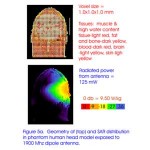 Mobile Phone Radiation: Stories about brain tumors running rampant through employees of certain industries might make you think twice about holding that cell-phone to your ear.
Mobile Phone Radiation: Stories about brain tumors running rampant through employees of certain industries might make you think twice about holding that cell-phone to your ear.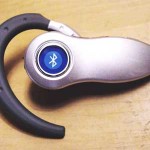 Bluetooth Risks: Bluetooth technology may resolve the issue about holding a cell-phone to your ear, because it contains 100 times less radiation than a cell-phone. The best bet is to use a wired headset, especially if it contains a ferrite bead. Best yet, use a cell-phone away from your body and turn on the speaker.
Bluetooth Risks: Bluetooth technology may resolve the issue about holding a cell-phone to your ear, because it contains 100 times less radiation than a cell-phone. The best bet is to use a wired headset, especially if it contains a ferrite bead. Best yet, use a cell-phone away from your body and turn on the speaker.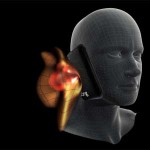 SAR and Continued Health Risks: For a phone to pass FCC certification and be sold in the United States, its maximum SAR level must be less than 1.6 watts per kilogram. To find out more about the latest 20 cell phones with the highest radiation levels, visit this linked article at Cnet Reviews.
SAR and Continued Health Risks: For a phone to pass FCC certification and be sold in the United States, its maximum SAR level must be less than 1.6 watts per kilogram. To find out more about the latest 20 cell phones with the highest radiation levels, visit this linked article at Cnet Reviews.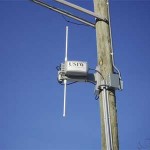 Wi-Fi as a Health Hazard: Electromagnetic field sensitivity, or EMF, is becoming an issue for many people who appear to be sensitive to Wi-Fi. While engineers and proponents state that the fields that are induced by Wi-Fi transmissions are well below those that could cause problems to humans, sufferers from EMF believe studies reveal that even these low-frequency, low-power fields can cause subtle damage to human tissue, citing evidence of cell death, faster-growing tumors and DNA damage.
Wi-Fi as a Health Hazard: Electromagnetic field sensitivity, or EMF, is becoming an issue for many people who appear to be sensitive to Wi-Fi. While engineers and proponents state that the fields that are induced by Wi-Fi transmissions are well below those that could cause problems to humans, sufferers from EMF believe studies reveal that even these low-frequency, low-power fields can cause subtle damage to human tissue, citing evidence of cell death, faster-growing tumors and DNA damage.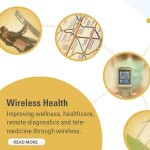 Wireless for Good Health: After reading all the above, you might see a conference on how wireless can be used for good health as ironic…or not. One of the biggest trends to watch at this year’s CTIA Wireless will be wireless solutions for wellness. At some point, wireless users can tap into the ability to monitor vital signs with our mobile devices.
Wireless for Good Health: After reading all the above, you might see a conference on how wireless can be used for good health as ironic…or not. One of the biggest trends to watch at this year’s CTIA Wireless will be wireless solutions for wellness. At some point, wireless users can tap into the ability to monitor vital signs with our mobile devices.
Hospital Hazards
 Air Embolisms from an Angiography: Injecting contrast media into the vasculature creates the risk of injecting air, potentially resulting in a fatal embolism. Most power injectors are equipped with safety features designed to reduce the risk of air embolism, but none of these features are foolproof.
Air Embolisms from an Angiography: Injecting contrast media into the vasculature creates the risk of injecting air, potentially resulting in a fatal embolism. Most power injectors are equipped with safety features designed to reduce the risk of air embolism, but none of these features are foolproof.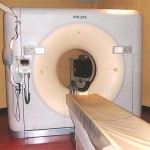 CT Radiation Deaths: Computed tomography (CT) has been touted for its reliability and convenience to the detriment of learning about its high radiation. In the U.S. alone, the CT is thought to be responsible for about 29,000 new cancers each year, along with 14,500 deaths.
CT Radiation Deaths: Computed tomography (CT) has been touted for its reliability and convenience to the detriment of learning about its high radiation. In the U.S. alone, the CT is thought to be responsible for about 29,000 new cancers each year, along with 14,500 deaths.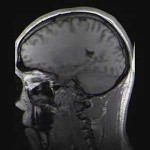 MR Imaging Burns: Magnetic Resonance (MR) imaging is a relatively safe diagnostic procedure. However, the use of radio frequency coils, physiologic monitors, electronically-activated devices, and external accessories or objects made from conductive materials has caused excessive heating, resulting in burn injuries to patients undergoing MR procedures.
MR Imaging Burns: Magnetic Resonance (MR) imaging is a relatively safe diagnostic procedure. However, the use of radio frequency coils, physiologic monitors, electronically-activated devices, and external accessories or objects made from conductive materials has caused excessive heating, resulting in burn injuries to patients undergoing MR procedures.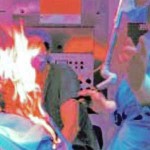 Surgical Fires: Yes, patients may catch fire during surgery, and the major ignition sources include electrosurgical units, electrocautery devices and lasers. The ECRI Institute also has investigated two fires — and is aware of a third where a patient died — that started inside surgical booms that house both electrical cables and hoses that supply oxygen or nitrous oxide.
Surgical Fires: Yes, patients may catch fire during surgery, and the major ignition sources include electrosurgical units, electrocautery devices and lasers. The ECRI Institute also has investigated two fires — and is aware of a third where a patient died — that started inside surgical booms that house both electrical cables and hoses that supply oxygen or nitrous oxide.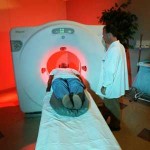 Technology Drives Healthcare Costs: This article points to a recent American Hospital Association survey that shows the largest component of hospital expenditures from 2004-2008 was labor. But, the author of this article argues that this is a “red herring” that covers the true cost of hospital technology.
Technology Drives Healthcare Costs: This article points to a recent American Hospital Association survey that shows the largest component of hospital expenditures from 2004-2008 was labor. But, the author of this article argues that this is a “red herring” that covers the true cost of hospital technology.
Other Technology Issues
 Dirty Electricity (DE): This threat is invisible, as it consists of surges of high-frequency voltage or electromagnetic radiation that contaminates your home. Surprisingly, dimmer switches and energy-efficient electronic devices count as significant contributors to this problem.
Dirty Electricity (DE): This threat is invisible, as it consists of surges of high-frequency voltage or electromagnetic radiation that contaminates your home. Surprisingly, dimmer switches and energy-efficient electronic devices count as significant contributors to this problem. Full Body Scan Complaints: More than 600 complaints were issued over use of full-body security scanners used in airports over the past year. Some of the machines use 40 millimeter wave technology and others use backscatter, low-level X-rays, though officials have said the health effects were minimal.
Full Body Scan Complaints: More than 600 complaints were issued over use of full-body security scanners used in airports over the past year. Some of the machines use 40 millimeter wave technology and others use backscatter, low-level X-rays, though officials have said the health effects were minimal. One Hour of Television = 80 Percent Increase in Heart Disease: Aside from this, the study found that there is an increased risk of cancer risk by nine percent and 11 percent increased risk of premature death even if one is not overweight. The point is to avoid sitting for prolonged periods of time.
One Hour of Television = 80 Percent Increase in Heart Disease: Aside from this, the study found that there is an increased risk of cancer risk by nine percent and 11 percent increased risk of premature death even if one is not overweight. The point is to avoid sitting for prolonged periods of time. Test-Tube Babes Might Worry: More than three million children have been born with the help of reproductive technology since 1978. While the majority of these children are healthy, as a group they’re at a higher risk for low birth weight, which is associated with obesity, hypertension and type 2 diabetes later in life.
Test-Tube Babes Might Worry: More than three million children have been born with the help of reproductive technology since 1978. While the majority of these children are healthy, as a group they’re at a higher risk for low birth weight, which is associated with obesity, hypertension and type 2 diabetes later in life.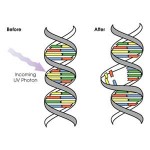 UV Light Exposure Limits: Although this article focuses on the new EU Optical Radiation Directive that limits workers to UV exposure at work, you might learn what these limitations are about and why they are of concern to the European Union. Many concerns about UV light in the workplace also are addressed by the Word Health Organization [PDF].
UV Light Exposure Limits: Although this article focuses on the new EU Optical Radiation Directive that limits workers to UV exposure at work, you might learn what these limitations are about and why they are of concern to the European Union. Many concerns about UV light in the workplace also are addressed by the Word Health Organization [PDF].
